
Pablo Ruiz Picasso was a Spanish painter, sculptor, printmaker, ceramicist and theatre designer who spent most of his adult life in France. One of the most influential artists of the 20th century, he is known for co-founding the Cubist movement, the invention of constructed sculpture, the co-invention of collage, and for the wide variety of styles that he helped develop and explore. Among his most famous works are the proto-Cubist Les Demoiselles d'Avignon (1907) and the anti-war painting Guernica (1937), a dramatic portrayal of the bombing of Guernica by German and Italian air forces during the Spanish Civil War.

Cubism is an early-20th-century avant-garde art movement that revolutionized European painting and sculpture, and inspired related artistic movements in music, literature, and architecture. In Cubist works of art, the subjects are analysed, broken up, and reassembled in an abstract form—instead of depicting objects from a single perspective, the artist depicts the subject from multiple perspectives to represent the subject in a greater context. Cubism has been considered the most influential art movement of the 20th century. The term cubism is broadly associated with a variety of artworks produced in Paris or near Paris (Puteaux) during the 1910s and throughout the 1920s.

New materials in 20th-century art were introduced to art making from the very beginning of the century. The introduction of new materials and heretofore non-art materials helped drive change in art during the 20th century. Traditional materials and techniques were not necessarily displaced in the 20th century. Rather, they functioned alongside innovations that came with the 20th century. Such mainstays as oil-on-canvas painting, and sculpting in traditional materials continued right through the 20th century into the 21st century. Furthermore, even "traditional" materials were greatly expanded in the course of the 20th century. The number of pigments available to artists has increased both in quantity and quality, by most reckoning. New formulations for traditional materials especially the commercial availability of acrylic paint have become widely used, introducing initial issues over their stability and longevity.
Martin Kippenberger was a German artist known for his extremely prolific output in a wide range of styles and media, superfiction as well as his provocative, jocular and hard-drinking public persona.
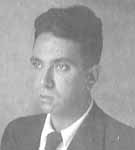
René Iché was a 20th-century French sculptor.

The Chicago Picasso is an untitled monumental sculpture by Pablo Picasso in Daley Plaza in Chicago, Illinois. The 1967 installation of The Picasso, "precipitated an aesthetic shift in civic and urban planning, broadening the idea of public art beyond the commemorative."

Municipal Museum Boijmans Van Beuningen is an art museum in Rotterdam in the Netherlands. The name of the museum is derived from the two most important collectors of Frans Jacob Otto Boijmans and Daniël George van Beuningen. It is located at the Museumpark in the district Rotterdam Centrum, close to the Kunsthal and the Natural History Museum.
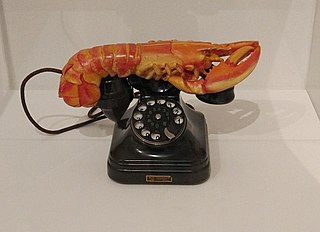
Lobster Telephone is a Surrealist object, created by Salvador Dalí in 1936 for the English poet Edward James (1907–1984), a leading collector of surrealist art. In his 1942 book The Secret Life of Salvador Dalí, Dalí wrote teasingly of his demand to know why, when he asked for a grilled lobster in a restaurant, he was never presented with a boiled telephone.

Museumpark is an urban park in Rotterdam, Netherlands, located between the Museum Boijmans Van Beuningen, Westersingel, Westzeedijk and the complex of the Erasmus MC, a medical centre affiliated with the Erasmus University.

The University Village is a complex of three apartment buildings located in Greenwich Village in the Lower Manhattan-part of New York City. The complex is owned by New York University and was built in the 1960s as part of the university's transition to a residential college. One of the towers, 505 LaGuardia Place, is a co-op that does not house students, and the other two towers, Silver Tower I and Silver Tower II, house faculty and graduate students of NYU. The buildings were designed by modern architects James Ingo Freed and I. M. Pei, and the central-plaza contains a sculpture by Carl Nesjär and Pablo Picasso. In 2008 the complex was designated a New York City Landmark by the Landmarks Preservation Commission.
Betograve is a type of concrete sculpting. A document published by the Nasher Sculpture Center says that betograve "...involves first pouring concrete into a form tightly packed with gravel, and, once set, precisely sand-blasting the surface of the concrete to expose the gravel beneath it". This "unique system of concrete placement" was first used by Carl Nesjar, a Norwegian painter, printmaker and sculptor. When Nesjar introduced the technique to Pablo Picasso, Picasso created a sculpture based on his folded sheet metal "Head of a Woman". The resulting piece "inaugurated a working relationship between Picasso and Nesjar that produced twenty-four works and lasted for the rest of Picasso's life".

Modern sculpture is generally considered to have begun with the work of Auguste Rodin, who is seen as the progenitor of modern sculpture. While Rodin did not set out to rebel against the past, he created a new way of building his works. He "dissolved the hard outline of contemporary Neo-Greek academicism, and thereby created a vital synthesis of opacity and transparency, volume and void". Along with a few other artists in the late 19th century who experimented with new artistic visions in sculpture like Edgar Degas and Paul Gauguin, Rodin invented a radical new approach in the creation of sculpture. Modern sculpture, along with all modern art, "arose as part of Western society's attempt to come to terms with the urban, industrial and secular society that emerged during the nineteenth century".
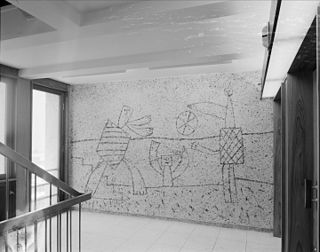
Picasso's Regjeringskvartalet murals are a series of murals designed by the Spanish artist Pablo Picasso in the late 1950s and the early 1970s. He designed five murals for the Regjeringskvartalet buildings in central Oslo, Norway. The designs by Picasso were executed in concrete by Norwegian artist Carl Nesjar, and were Picasso's first attempt at monumental concrete murals. The buildings onto which the murals were executed are known as the 'H-Block' or Highrise (1959) and 'Y-Block' (1968); they were designed by the Norwegian architect Erling Viksjø. The largest mural, The Fishermen (1970) is on the façade of Y-Block. Picasso would later create works in a similar vein in Barcelona and Stockholm.

Carl Nesjar was a Norwegian painter, sculptor and graphic artist. He is best known for his collaborations with Pablo Picasso; serving for nearly twenty years as Picasso's chosen fabricator — the artist who turned Picasso's drawings and scale models into large public sculptures. One such work was Picasso's Regjeringskvartalet murals which are located in Oslo, the city where Nesjar lived for most of his life. He is also known for his series of "Ice Fountains” which can be found in cities around the world.
Peanut-Butter Platform is an artwork by Dutch artist Wim T. Schippers. It consists of a floor covered with peanut butter and nothing else.
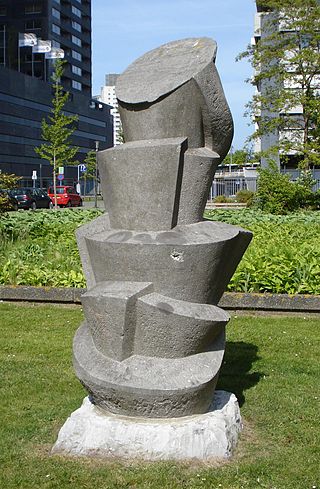
Pieter Antonie van Stuivenberg was a Dutch artist, who was active as sculptor, painter, lithographer, and graphic artist.
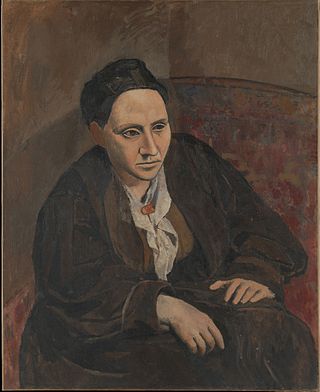
Portrait of Gertrude Stein is an oil-on-canvas painting of the American writer and art collector Gertrude Stein by Pablo Picasso, which was begun in 1905 and finished the following year. The painting is housed in the Metropolitan Museum of Art in New York. It is considered one of the important works of Picasso's Rose Period. The portrait has historical significance, due to the subject's role in Picasso's early life as a struggling artist and eventual commercial success. It also represents a significant transitional step in the artist's move towards Cubism.
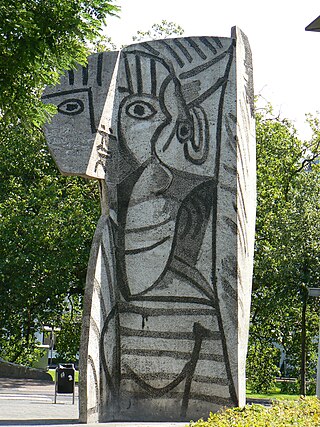
Lydia Corbett, also known as Sylvette David, is a French artist and former artist's model known for being "the girl with the ponytail" in Pablo Picasso's Sylvette series of paintings and a 1970 sculpture.
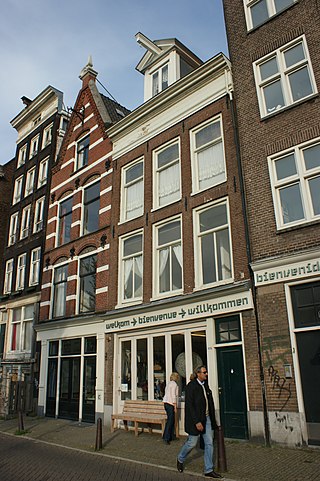
Galerie Wim van Krimpen, also Galerie Van Krimpen is a Dutch former art gallery in Amsterdam and Rotterdam by Wim van Krimpen.

Figure découpée or L'oiseau is an abstract sculpture by Pablo Picasso: there are a total of three Figure découpée sculptures. There is one located in Vondelpark NL, another on the campus of Massachusetts Institute of Technology in the United States and another is in Helsingborg Sweden. The sculpture is a depiction of a bird, but it is commonly referred to as flat bird, flat fish or fish statue.

















